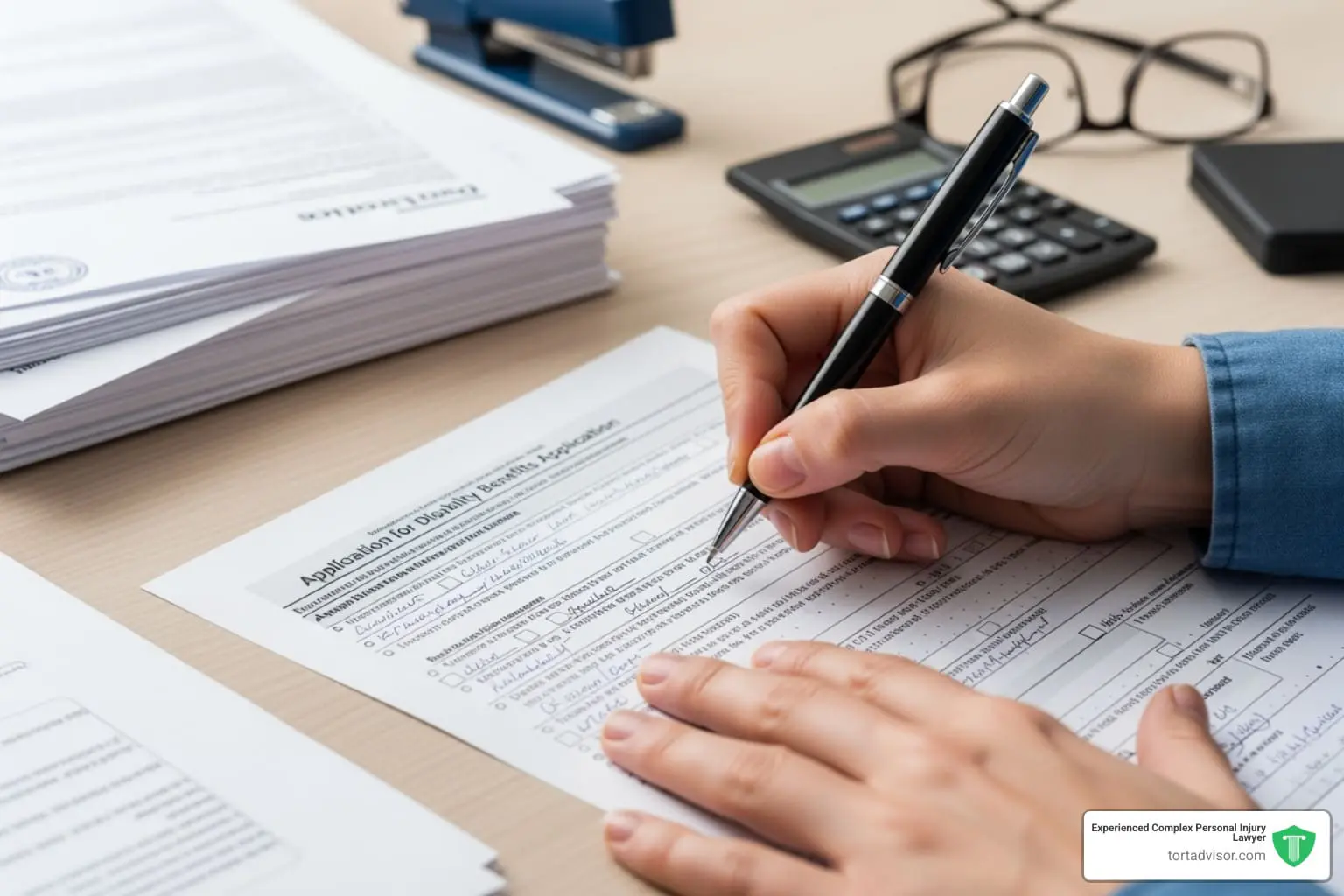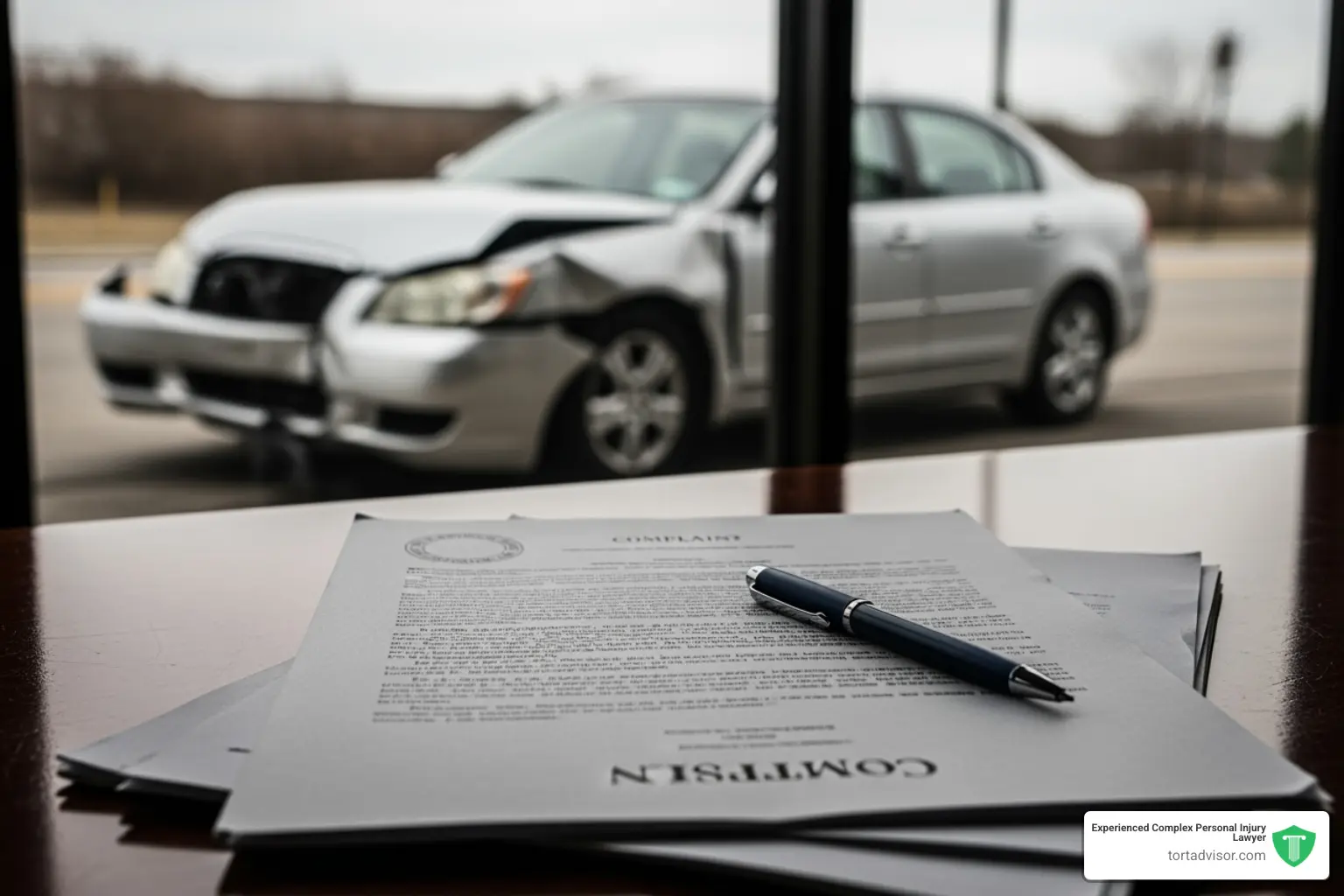


Why Understanding the Car Accident Lawsuit Process Matters
How does a lawsuit work for a car accident? A car accident lawsuit follows these key steps:
- File a Complaint – Your attorney files formal legal documents with the court.
- Serve the Defendant – The at-fault party receives official notice of the lawsuit.
- Discovery Phase – Both sides exchange evidence and sworn testimony.
- Settlement Negotiations – Attorneys attempt to resolve the case without a trial.
- Trial – If no settlement is reached, a judge or jury decides the outcome.
- Verdict and Collection – The court issues a judgment, and damages are paid.
Being injured in a car accident is traumatic. Beyond the physical pain, you face mounting medical bills, lost wages, and the stress of a complex legal system.
While research shows that 97% of personal injury cases resolve through settlement, understanding the lawsuit process is crucial. Filing a lawsuit is often the necessary step to motivate insurance companies to offer fair compensation. The process may seem daunting, but it follows a structured path designed to uncover the truth and determine a fair outcome.
Time is a critical factor. Most states give you only two to three years from the date of the accident to file a lawsuit. California has a two-year statute of limitations for personal injury cases, while New York allows three years. Missing this deadline can mean losing your right to compensation forever.
I’m Mason Arnao, and my work in data management for legal professionals has given me a unique perspective on the procedural requirements that drive successful outcomes. This guide breaks down each stage of the car accident lawsuit process into clear steps, so you can understand your options, your rights, and when to take legal action.

The First 72 Hours: Critical Steps After a Car Accident
The moments after a car crash are confusing and frightening. In these critical first 72 hours, the actions you take can significantly impact any future insurance claim or lawsuit.
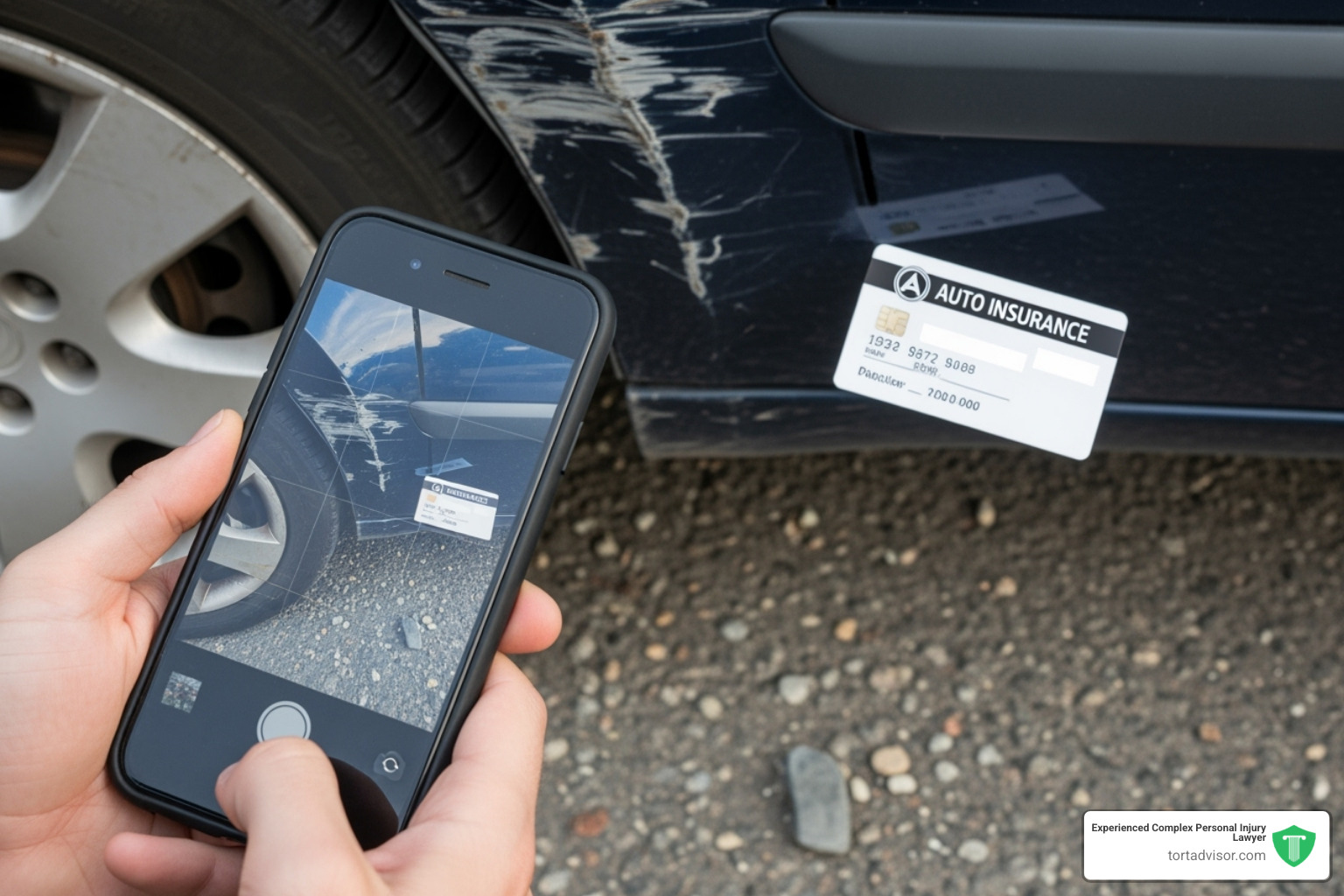
Your first priority is your health and safety. Seek immediate medical attention, even if you feel fine. Adrenaline can mask serious injuries like whiplash or internal bleeding. A doctor’s visit creates a vital medical record linking your injuries to the accident, which is crucial evidence.
Next, report the accident to the police. A police report is an official, neutral record of the incident. In many states, like Texas, reporting is mandatory for accidents involving injuries. You can learn more in our guide on How to Report a Motor Vehicle Accident.
If you are able, gather evidence at the scene. Use your smartphone to take photos and videos of vehicle damage, skid marks, traffic signs, and road conditions. These images provide a visual record that can’t be disputed later.
Exchange information with the other driver, including names, phone numbers, addresses, insurance details, and license plate numbers. Be courteous but stick to the facts.
If there were witnesses, get their contact information. Independent testimony can be powerful if fault is contested.
Notify your insurance company within 24 hours. Your policy likely requires prompt notification. When you report, describe what happened without speculating or admitting fault.
Crucially, avoid admitting fault. Even saying “I’m sorry” can be interpreted as an admission of liability. Be polite, but do not apologize or make statements about who caused the crash.
For a complete list of necessary documents, see our FAQ on What Evidence Do I Need To Prove My Case?. The steps you take in these first 72 hours build the foundation for your case.
Insurance Claim vs. Civil Lawsuit: Know Your Options
After a car accident, you have two main paths to seek compensation: an insurance claim or a civil lawsuit. Understanding the difference is key to your financial recovery. An insurance claim is an informal negotiation with an insurer, while a lawsuit is a formal legal battle in court. Most cases start with a claim and only proceed to a lawsuit if negotiations fail.
| Feature | Insurance Claim | Civil Lawsuit |
|---|---|---|
| Forum | Insurance Company | Civil Court System |
| Key Figure | Insurance Adjuster | Judge/Jury |
| Process | Informal Negotiation, Investigation | Formal Legal Procedure, Discovery, Trial |
| Resolution | Settlement | Settlement or Verdict |
| Binding? | Yes, once accepted | Yes, once judgment entered or settlement signed |
| Public Record? | No | Yes |
| Costs | Minimal direct costs (premiums, deductible) | Court fees, expert witness fees, attorney fees (often contingency) |
Insurance Claims
Nearly every case begins with an insurance claim filed with the at-fault driver’s insurance company. An insurance adjuster will investigate and make a settlement offer. Insurance companies aim to minimize payouts, so the first offer is almost always lower than your case’s true value. Claims are also limited by the at-fault driver’s policy limits. For guidance on starting this process, see What’s The First Step To Filing A Claim?.
Warning: Never sign any document from an insurance company without first consulting an attorney. You could unknowingly sign away your right to future compensation.
Civil Lawsuits
When insurance negotiations fail or the offer is too low, it’s time to consider a civil lawsuit. This is a formal action where you (the plaintiff) sue the at-fault party (the defendant) in court. Understanding how does a lawsuit work for a car accident is vital if your claim is denied, your injuries are severe, or the insurer negotiates in bad faith.
Filing a lawsuit sends a strong message that you are serious about receiving full compensation. While it is a more formal and time-consuming process, it is often the only way to secure the financial recovery you need when an insurer refuses to be fair.
How Does a Lawsuit Work for a Car Accident? The Step-by-Step Process
How does a lawsuit work for a car accident? The legal journey follows a structured path to uncover facts, determine fault, and assess damages. While it seems complex, the process can be broken down into clear, manageable stages.
Step 1: Hiring an Attorney and Filing the Complaint
The first step is hiring an experienced personal injury attorney. Most work on a contingency fee basis, meaning you pay nothing unless they win your case. This makes quality legal help accessible. Our Do I Need a Personal Injury Lawyer page offers more insight.
Your attorney will draft and file a “Complaint” with the court. This document outlines your allegations against the at-fault party (the “defendant”) and the damages you seek. In California, this involves forms like the Summons (form SUM-100). The defendant is then formally notified through a process called “serving the defendant.” They typically have 30 days to file a response, known as an “Answer.”
Step 2: The Discovery Phase – Gathering the Facts
Discovery is the formal process where both sides exchange information and evidence. This fact-finding mission is often the longest part of a lawsuit and is designed to prevent surprises at trial. Key discovery tools include:
- Interrogatories: Written questions that must be answered under oath.
- Depositions: Sworn verbal testimony from parties and witnesses, recorded by a court reporter.
- Requests for Production of Documents: Formal requests for items like police reports, medical records, and proof of lost wages.
- Requests for Admissions: Written statements asking the other party to admit or deny specific facts.
In some cases, the defense may request an independent physical or mental examination. Attorneys may also hire expert witnesses, such as accident reconstructionists or medical specialists, to provide expert opinions.
Step 3: Negotiations and Mediation
Even after a lawsuit is filed, settlement efforts continue. As noted earlier, 97% of personal injury cases settle out of court. Attorneys for both sides engage in ongoing settlement talks, using evidence from discovery to assess the case’s strengths and weaknesses.
If negotiations stall, the parties often turn to mediation. A neutral third-party mediator helps facilitate discussion and explore potential resolutions. The mediator does not force a settlement but guides the parties toward a mutually agreeable outcome. Mediation is highly effective at resolving disputes without the time, expense, and uncertainty of a trial.
Step 4: Going to Trial and Receiving a Verdict
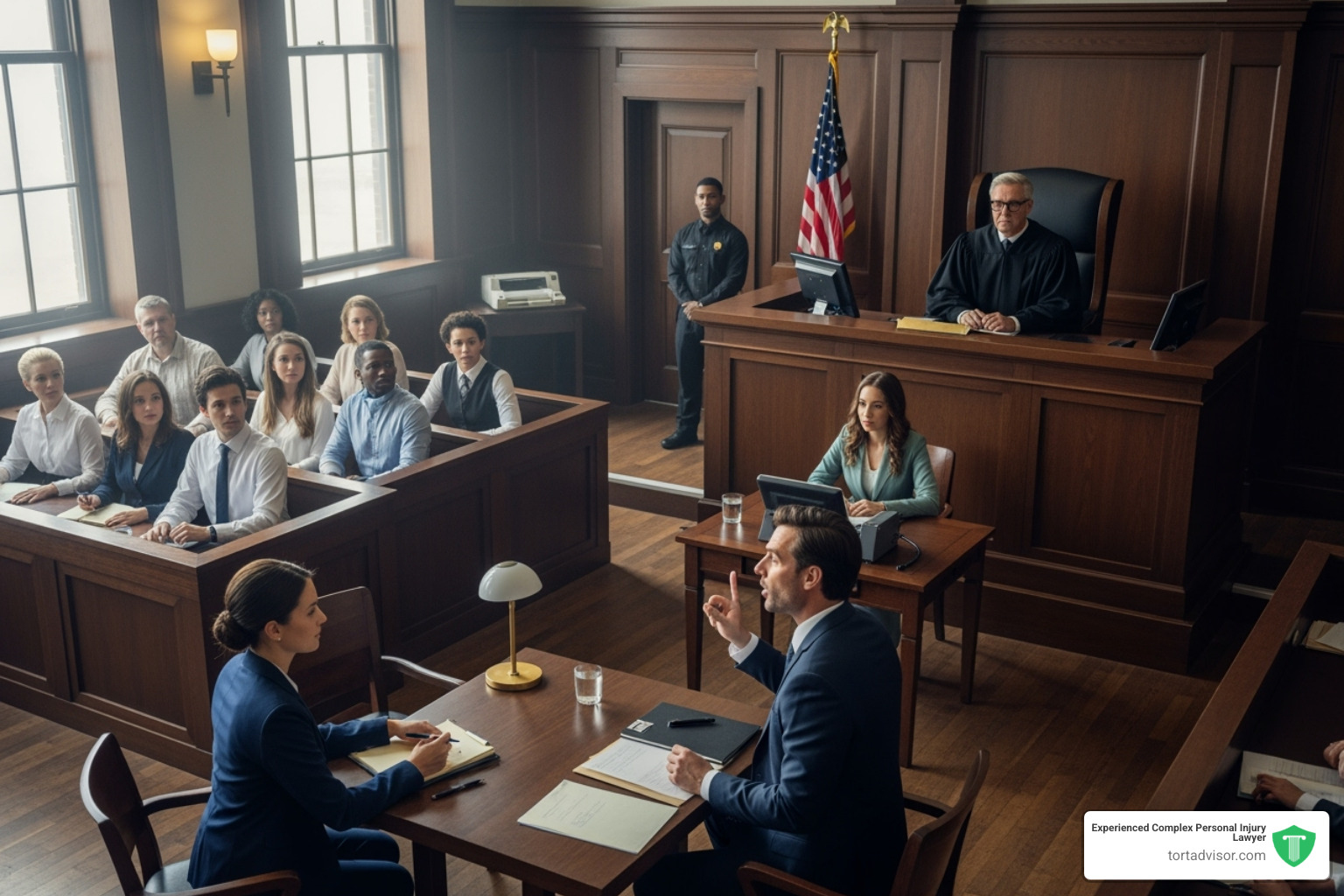
If settlement attempts fail, the case proceeds to trial. Here, both sides present evidence and arguments to a judge or jury. The trial process includes jury selection, opening statements, the presentation of evidence and witness testimony, and closing arguments. After all evidence is presented, the jury deliberates in private to reach a verdict on fault and damages.
Most car accident trials last only a few days, but complex cases can take longer. While an appeal is possible if legal errors occurred, it can add years to the case. For more on the litigation process, explore our resources on Personal Injury Lawsuits.
Key Legal Factors That Influence Your Case
Several legal principles and state-specific laws are crucial to the outcome of a car accident lawsuit. Understanding these factors helps you steer your claim effectively.
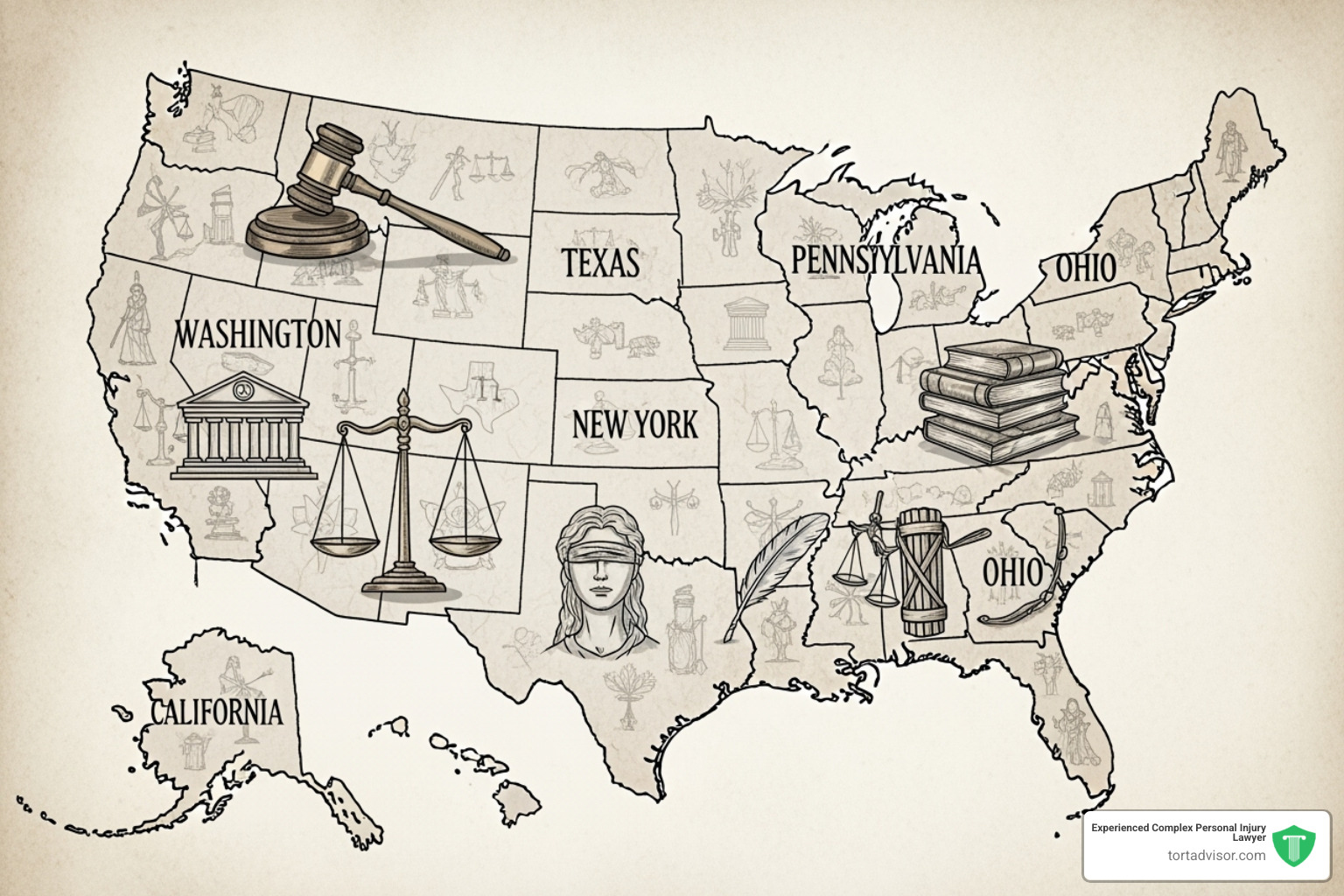
Understanding Fault: State Laws and Negligence
At the heart of every case is negligence—the failure to use reasonable care. How states handle fault varies significantly.
- At-Fault States: In most states (like CA, TX, FL), the person who caused the accident is financially responsible.
- No-Fault States: In states like New York and Florida, your own insurance pays for initial medical bills and lost wages, regardless of fault. You can still sue if your injuries meet the state’s “serious injury threshold.”
Rules for shared fault also impact your compensation:
- Pure Comparative Negligence (CA, NY): Your compensation is reduced by your percentage of fault.
- Modified Comparative Negligence (Many States): You cannot recover damages if your fault is 50% or 51% or more.
- Contributory Negligence (Few States): This harsh rule bars you from recovering any damages if you are even 1% at fault.
For more on this topic, see our guide on Common Motor Vehicle Accident Injuries.
How the Statute of Limitations Works for a Car Accident Lawsuit
The statute of limitations is a strict deadline for filing a lawsuit. Miss this window, and you lose your right to seek compensation. The clock usually starts on the accident date. Most states allow two to six years, but it varies. For example, California has a two-year statute of limitations for personal injury cases, while New York allows three years.
Deadlines are often much shorter for claims against government entities. Exceptions can extend the deadline, such as for injured minors or when an injury is not immediately discoverable (the discovery rule). For more details, see our FAQ on How Long Do I Have To File A Lawsuit?.
Calculating Damages and Potential Liabilities
Compensation, or damages, is intended to cover your losses. These fall into several categories:
- Economic Damages: These are tangible, provable financial losses, including past and future medical expenses, lost wages, and property damage.
- Non-Economic Damages: This compensates for intangible suffering like pain, emotional distress, and reduced quality of life. Your spouse may also have a claim for loss of consortium (loss of companionship).
- Punitive Damages: In rare cases of extreme misconduct (like drunk driving), these may be awarded to punish the defendant.
If damages exceed the at-fault driver’s insurance coverage, they are personally liable for the remaining amount. This can put their personal assets at risk, which is why carrying adequate insurance is so important. You can get a rough estimate with our MVA Settlement Calculator and learn more at What Kind Of Compensation Could Victims Receive?.
Frequently Asked Questions about Car Accident Lawsuits
How long does a typical car accident lawsuit take to resolve?
The timeline for a car accident lawsuit varies dramatically, from a few months to several years. Factors that influence the duration include the severity of your injuries, the complexity of the case, whether fault is disputed, and the court’s schedule. Simple cases that settle early are resolved much faster than complex cases that go to trial, which often take a year or more.
What percentage of car accident cases go to trial?
Very few. The vast majority of car accident cases—around 97% of personal injury cases—are settled out of court. Trials are expensive, time-consuming, and unpredictable for both sides, creating a strong incentive to negotiate a settlement. However, filing a lawsuit is often a necessary step to motivate an insurance company to make a fair offer.
Can I be sued personally if my insurance doesn’t cover all the damages?
Yes. If a court awards damages that exceed your insurance policy’s liability limits, you are personally responsible for paying the remaining amount. For example, if you have a $25,000 policy limit and the judgment is for $100,000, you are on the hook for the other $75,000. This could put your personal assets, such as savings, property, and even future wages, at risk. This is why carrying liability coverage well above the state minimum, and considering an umbrella policy, is critical to protecting your financial future.
Conclusion
Understanding how does a lawsuit work for a car accident gives you control during one of life’s most stressful moments. The process isn’t simple, but it follows a clear path—from gathering evidence and filing a complaint to negotiating a settlement and, if necessary, going to trial. Each stage is designed to secure the compensation you need to move forward.
The legal landscape is complex, with state-specific fault rules, statutes of limitations, and insurance company tactics all playing a role. This is why professional legal guidance is essential. While most cases settle, the ability to take your case to court provides crucial leverage in negotiations.
Fair compensation can’t undo the trauma of an injury, but it can ease the financial burden of medical bills and lost wages. You didn’t ask for this to happen, but you have the power to take action.
At Tort Advisor, we connect accident victims with top-rated specialty attorneys who have proven results across all 50 states. We work exclusively with highly skilled lawyers who understand the nuances of personal injury law in their jurisdictions and fight for their clients’ rights.
You don’t have to steer this alone. The right attorney will handle the legal complexities while you focus on healing. Take the next step and get the justice you deserve.
Free Confidential Case Evaluation
Complete the short form below to get an immediate FREE case review with an expert in your specific claim. Don't wait, your case could be time sensitive to file a claim.
Related Posts
Prove your SSDI for anxiety case. Learn SSA criteria, gather crucial evidence, and navigate the application process with our expert guide.
Beyond retirement, explore all your Social Security benefits. Understand types, apply, and manage claims for security.
Conquer your SSDI claim! Master the process with expert SSDI application tips, documentation, and appeal strategies. Apply smart.
North Miami Beach car accident lawyer needed? Get expert help navigating Florida laws & maximizing your claim. Don't get wrecked twice!
After an Alberta car accident? Our guide covers critical steps, compensation, and how car accident lawyers help you recover what you deserve.
Stop Disability benefits fraud! Learn what it is, how to report it, and its severe consequences. Protect vital benefits.


